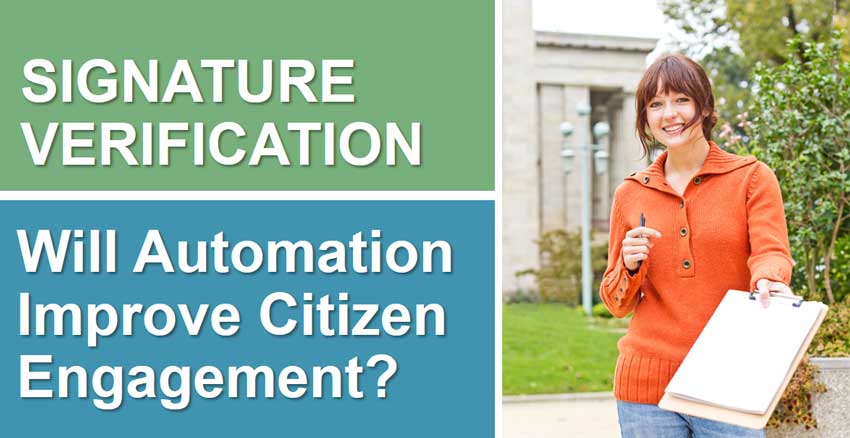Signature Verification: will automation improve citizen engagement? It’s a very real possibility.
A recent news article regarding a petition in Colorado to do away with standard time cited the adverse health effects of moving the clock forward one hour every March. However, the highlight of the article wasn’t about potential ballot initiative, but about the cost associated with gathering enough signatures.
In Colorado, as in most states, citizens can place initiatives on a statewide ballot if they meet the mandatory requirements for gathering enough signatures. For Colorado, this means the number must equal at least 5% of the total number of votes cast for the Secretary of State in the most recent election. This translates to almost 125,000 signatures. Consultants recommend collecting 60% over the required amount because election officials typically invalidate up to 40% of signatures. Overall costs per signature range from $5 to $7. That’s a lot.
The number of signatures required for larger states is significantly bigger. For California, the number of required signatures ranges between 600,000 and just under 1,000,000.
Petition Costs: Collecting & Processing
The cost for a single petition pales in comparison to the cost of state election officials processing those petitions. In California, for the six referendums approved, there are many other petitions that were processed and invalidated. Overall, this translates to a significant amount of human effort on the part of state and local election officials to verify petitions, especially since the window of time allowed to perform the process is quite short.
A simple back-of-the-envelope calculation places the cost of an average petition review at greater than $25,000 per petition, and this is for a small state. For states such as California, costs can easily exceed $150,000 per petition.
Signature Verification and Petitions
Additional problems other than cost exist, mainly the training and resulting accuracy of the staff who have to verify signatures against voting references. Even if there is no problem with staffing for petition review, there is the additional problem that seems to rear its head every year of potential voter fraud.
Simply put, the ability to a person to evaluate a signature on a petition against a voter record is highly questionable. This problem cuts both ways: fraudulent signatures can pass through undetected while genuine ones get invalidated. It is a process that is fraught with problems.
Petition Automation
So what is the answer? Petition Automation. Just like any other document automation problem, petitions are documents that have data on them. Many tasks are often involved such as counting the number of entries, comparing the written address with the voter record, and then comparing the signature on the petition with the voter’s genuine signature. This solution involves a number of complex computer vision and AI-based processes including:
- Visual analysis of the number of completed rows, taking care to record rows that are missing information;
- Recognition of the voter name and address in order to perform a lookup in the voter record to compare and verify; and
- Signature Verification of the petition signature against the authentic voter signature.
Advances in Computer Vision
In the past, due to the fact that this information was handwritten, these processes were 100% manual. With the advances in computer vision based upon deep learning neural networks, a large percentage of this process can be automated, and then augmented by staff to handle the most difficult cases that the system cannot handle automatically. With computer systems, there is little to question regarding bias or hidden agenda. The system is not a member of any party and does not base decisions on emotion.
The result is a significant improvement in citizen engagement in both terms of speed and reliability. I think that’s something we can all agree is a good thing.
###
If you found this interesting, you may want to find out more about signature verification automation or to request a demo and needs assessment.




